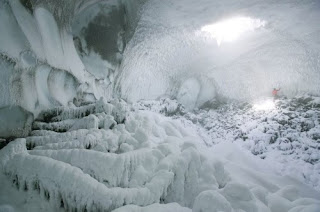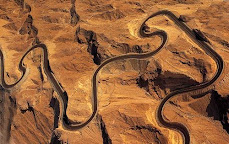Antarctica is Earth's southernmost continent, overlying the South Pole. It is situated in the southern hemisphere, almost entirely south of the Antarctic Circle, and is surrounded by the Southern Ocean. At 14.4 million km² (5.4 million sq mi), it is the fifth-largest continent in area after Eurasia, Africa, North America, and South America. About 98% of Antarctica is covered by ice, which averages at least 1.6 kilometres (1.0 mi) in thickness.
History
Belief in the existence of a Terra Australis—a vast continent in the far south of the globe to "balance" the northern lands of Europe, Asia and North Africa—had existed since the times of Ptolemy (1st century AD), who suggested the idea to preserve the symmetry of all known landmasses in the world. Depictions of a large southern landmass were common in maps such as the early 16th century Turkish Piri Reis map. Even in the late 17th century, after explorers had found that South America and Australia were not part of the fabled "Antarctica", geographers believed that the continent was much larger than its actual size.
European maps continued to show this hypothetical land until Captain James Cook's ships, HMS Resolution and Adventure, crossed the Antarctic Circle on 17 January 1773, in December 1773 and again in January 1774. Cook in fact came within about 75 miles (121 km) of the Antarctic coast before retreating in the face of field ice in January 1773. The first confirmed sighting of Antarctica can be narrowed down to the crews of ships captained by three individuals. According to various organizations (the National Science Foundation,NASA,the University of California, San Diego, and other sources), ships captained by three men sighted Antarctica in 1820: Fabian Gottlieb von Bellingshausen (a captain in the Russian Imperial Navy), Edward Bransfield (a captain in the Royal Navy), and Nathaniel Palmer (an American sealer out of Stonington, Connecticut). Von Bellingshausen saw Antarctica on 27 January 1820, three days before Bransfield sighted land, and ten months before Palmer did so in November 1820. On that day the two-ship expedition led by Von Bellingshausen and Mikhail Petrovich Lazarev reached a point within 32 kilometers (20 mi) of the Antarctic mainland and saw ice fields there. The first documented landing on mainland Antarctica was by the American sealer John Davis in Western Antarctica on 7 February 1821, although some historians dispute this claim.
Amazing Places like Guatemala City,Etna Volcano,Antarctica,Australia,Brazil,Egypt,Dubai,Asia,Argentina,Africa,Hawaii,World wonders,World Biggest,World most amazing things,world record,USA,Thailand,Sydney,Sinkhole,Ukraine,Village,USA,Water falls,River,Oceans,Bridge,China wall,Temple,Holly land,Rare Animals Park,Staircases,Fountains,Icebergs,Museum,Stadium,Atomium,Bridge,Islands,Hills,Mountains,Europe,Airport,Port.
DISCLAIMER
The contents of this blog is taken from Internet only. Some images are from public websites, groups, Communities, discussion boards , e-mails etc.
We are extending our courtesy to those peoples,websites, groups and communities. If any suggestions or complaints, please Email me..
We are extending our courtesy to those peoples,websites, groups and communities. If any suggestions or complaints, please Email me..


















